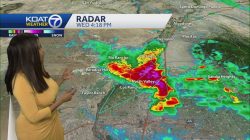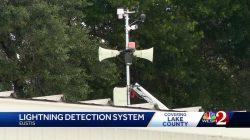Understanding the Impact of a Late ADHD Diagnosis
Maybe it came after a lengthy wait for an NHS appointment, a suggestion from your GP, or a lightbulb moment during an online assessment. Now you’re staring at the screen where your diagnosis letter is open, wondering what to do next. You’re not a child. You’re not bouncing off the walls. You’re not someone who fits the stereotype. And yet, being diagnosed as an adult is increasingly common — recent data shows that around 56 percent of adults with ADHD receive their diagnosis after the age of 18.
A late ADHD diagnosis can feel like someone has finally handed you the manual to your own brain. For many adults, it doesn’t arrive with relief alone. It also comes with a wave of grief. Grief for all the years spent not knowing. For the school reports that said you weren’t trying hard enough. For the jobs that slipped through your fingers. For the friendships that faded when you forgot, again, to text back. For the relationships that ended because you were “too much.” For all the burnout cycles that made you feel broken.
What makes ADHD hard to spot, especially in adults, is that most of us build a life around not knowing. That means years of overcompensating, masking, or swinging between brilliance and burnout. Both of us (Alex and Katie) are ICF credentialed ADHD coaches and coach trainers, and many of the people we coach are high achievers. They’ve built careers, raised families, and led teams. But underneath that is often a deep undercurrent of exhaustion. And now, they finally have an explanation.
This is the power and the weight of a late ADHD diagnosis. It’s not about finding excuses. It’s about finally having an honest lens through which to view your life. Suddenly, the scattered school experience, the inconsistent energy, the tidal wave of emotion, the inability to prioritize, and the bursts of creativity followed by inertia all make sense. For the first time, many people feel seen.
We call these the “Wait… that was ADHD?” moments. Like the client who thought her inability to keep the house tidy was a moral failing. Or the father who believed his emotional intensity was a flaw, rather than the result of a brain that processes emotion quickly and deeply. Or the entrepreneur who could scale a business to millions but still couldn’t manage his inbox. ADHD doesn’t just show up where people expect it to. It hides in the everyday friction. That’s what makes it so misunderstood.
The Story We’ve Been Told About ADHD
The story we’ve been told about ADHD from mass media is narrow and outdated. It’s often framed as a childhood issue, more common in boys, and defined by hyperactivity and distraction. But that lens misses so much. It overlooks internal restlessness, time challenges, emotional sensitivity, sensory overload, and mental clutter. It also fails to capture how ADHD presents differently depending on how we are racialized or our gender, our culture, upbringing, etc., and the roles we’ve had to perform.
Many women are diagnosed later in life because they’ve been socialized to hide their difficulties. Research confirms this isn’t just anecdotal — on average, women who are not diagnosed in childhood receive their ADHD diagnosis at 36 to 38 years old, highlighting a significant gender-based diagnostic delay.
They become the people-pleasers, the overachievers, the ones who hold it all together. Until one day, they can’t. Diagnosis often follows burnout. And burnout, in ADHD terms, is not just tiredness. It is the body and brain saying, “I can’t keep pretending I’m not struggling.”
What Now?
Start by knowing that the diagnosis doesn’t change who you are. It explains who you’ve always been. It doesn’t erase your past, but it helps you rewrite the narrative. This isn’t about blaming everything on ADHD. It’s about finally understanding the reasons behind the patterns. From there, you can begin to make changes that are actually sustainable.
You might notice the invisible labor you’ve been carrying. The mental tabs open all day. The constant self-monitoring. The little systems and rituals that helped you survive without even realizing why. You might cry. You might feel rage at how long it took someone to see you clearly. You might laugh when you realize that your love of novelty, your ability to think ahead, and your gut sense of what people need are not random quirks. They are part of your wiring.
Getting the right support can help. Many clients come to ADHD coaching asking for practical help, like tools to stay organized or tips to be more productive. These things matter, but they’re often driven by a deeper desire: to feel more “normal,” to finally function like everyone else. Most have spent years internalizing the message that they just need to try harder. Coaching offers a different path. It helps shift that deficit mindset. The goal isn’t to become more neurotypical. It’s to understand your brain, recognize your strengths, build self-trust, and create systems that actually work for you. The strategies do come, but they come from a place of clarity, not shame.
Start Slowly
Don’t rush to fix everything. You’ve likely been in survival mode for years. That’s something we explore deeply in our book, because so many people with late-diagnosed ADHD have been surviving (rather than thriving) without realizing it. They’ve been masking, pushing through, and blaming themselves. Now is the time to get curious. Notice what energizes you. Name the strengths you’ve used to get this far, even when things felt impossible. Learn the difference between what’s hard because it’s unfamiliar, and what’s hard because it was never designed with your brain in mind.
You’re not behind. You’re not lazy. You’ve been working twice as hard with half the insight. And now you have that insight. That is a powerful beginning.
Diagnosis is not the end of a story. It is the start of a new one. One where you get to meet yourself without shame. One where you stop asking, “What’s wrong with me?” and start asking, “What do I need?”
That question can change everything.







